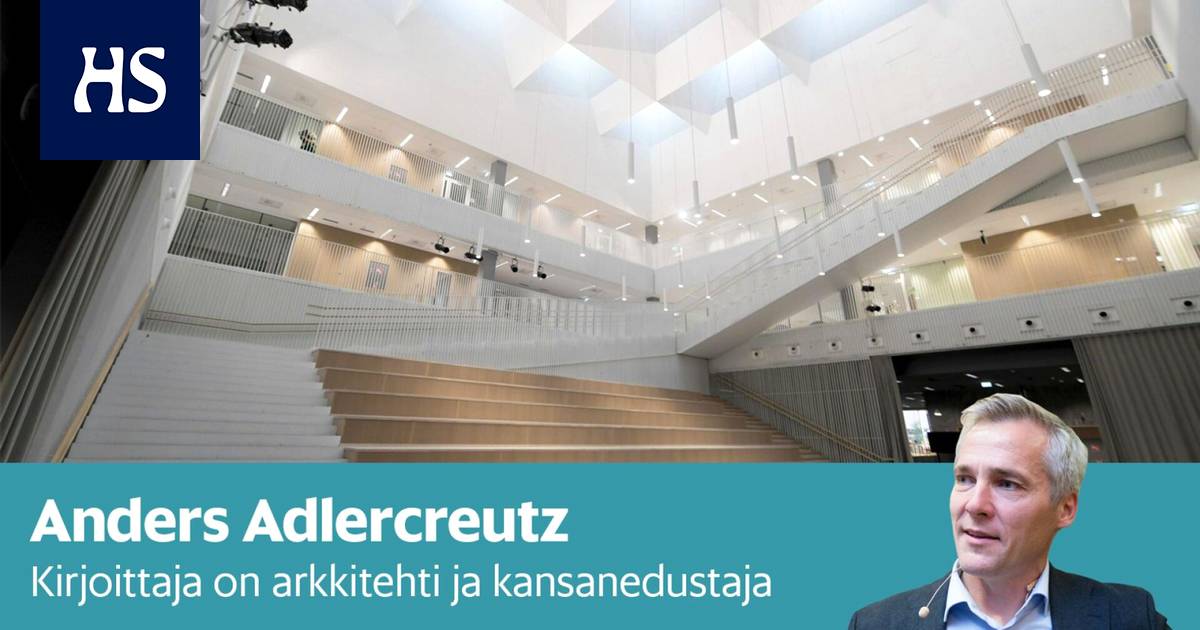The discussion about whether Finnish architecture is boring starts from a special assumption about the task of architecture, writes architect, member of parliament Anders Adlercreutz.
What is architecture the opposite of boring? Is it experiential or entertaining?
Architecture can be experiential, even if it doesn’t appear as such when you first look at the facade. An individual building can also appear boring, but together with other buildings it forms an interesting and exhilarating experience.
Does architecture even have to offer wow feelings? Or can it be justifiably claimed that architecture is played with so much money and resources that its quality and effectiveness must be evaluated on a heavier scale?
Good and sustainable architecture is determined by the play of light and shadow, the character of the materials, and how the building takes into account the people using the building and their needs. Good architecture consists of the aesthetics of the building, but also of how the building relates to its surroundings.
Swedish architect Gunnar Asplund said at the time that “God stadsarkitektur är som soldarder i ledet” i.e. “Good urban architecture is like a group of soldiers in a row”. By this he meant that it should not “jump to the eyes”.
Individual buildings, “soldiers”, rarely play a big role in the cityscape. However, the whole they create can be either intact and experiential or hard to grasp and broken. Their task is to provide a background for those few exclamation marks, buildings that, because of their mission or position, are given space and the right to shine – a cathedral, a concert hall or a main library that calls the whole nation together.
In the early years of its existence, Puu-Käpylä did not garner special praise. It was considered monotonous and monotonous. Today, no one thinks so. Good architecture provides the framework within which life with its various events, personalities, and perhaps random extras settles.
The architectural debate often focuses on building facades. However, the architectural experience is what happens between the facades – in the street space and inside the buildings.
Good architecture can be seemingly boring and this “boredom” in itself creates a basis for experiences. Being quiet provides a framework for seeing and hearing. You can say that how sustainable architecture is is more related to the building’s effect on its environment, how the environment is shaped around the building, than to the building’s appearance in itself.
Thinking whether Finnish architecture is boring or not is based on a special assumption about the task of architecture. The architectural debate often drifts into completely wrong tracks.
The task of architecture is not to provide entertainment, but a framework for a balanced and safe life. A framework that respects human dignity and nature. Good architecture is humble: it takes into account that when we build, we use not only material resources but also power over the surrounding nature.
The tradition of Finnish architecture is in a tradition that could perhaps be called a tradition of modesty. It reflects the value base of our country striving for democracy and equality.
That’s why successful Finnish architecture is perhaps boring.
Helsingin Sanomat is organizing a debate program at the Helsinki Book Fair. Debatt: Why is Finnish architecture boring? Architect, Member of Parliament Anders Adlercreutz and Aalto University’s professor of architectural principles and theory Jenni Reuter will talk at the Helsinki Book Fair on Thursday at 5:30 p.m., Senatintori stage. Available to watch live at HS.fi. The discussion will be held in Swedish.
#Column #Architecture #boring #create #basis #experiences









